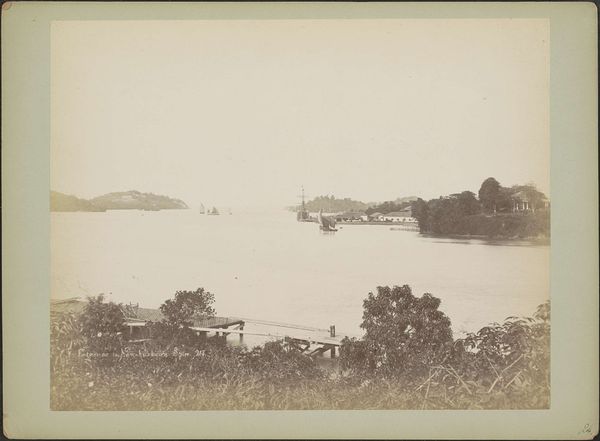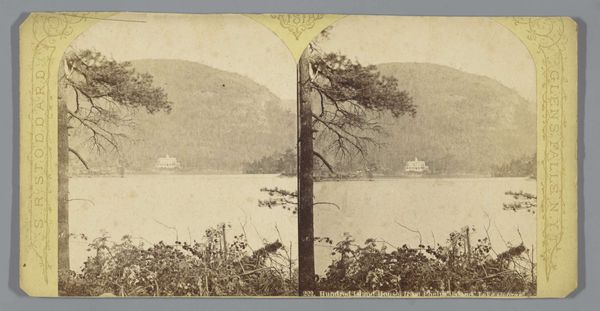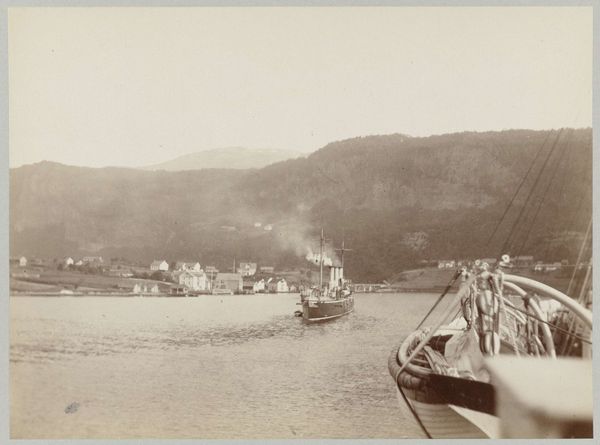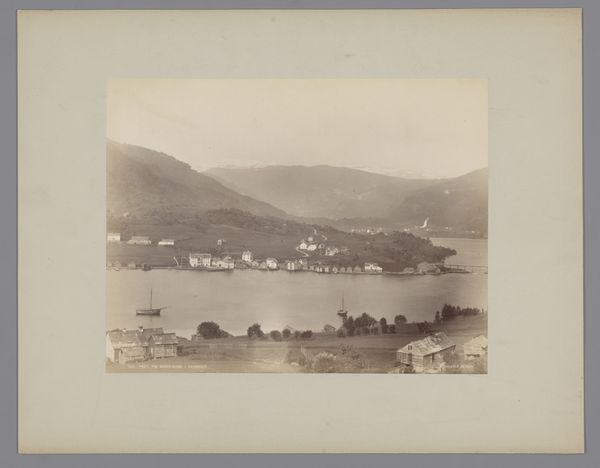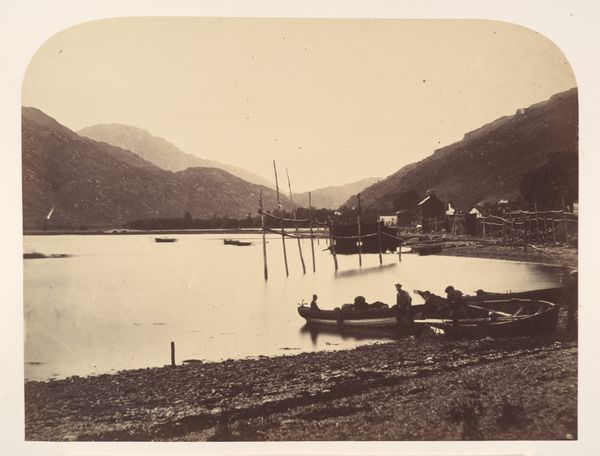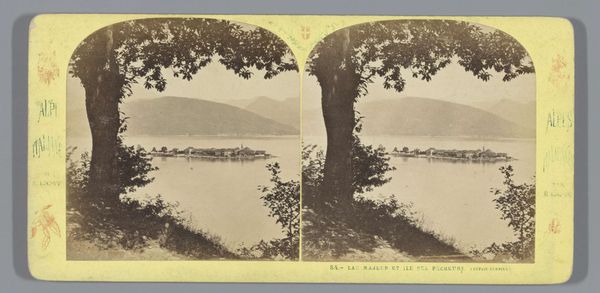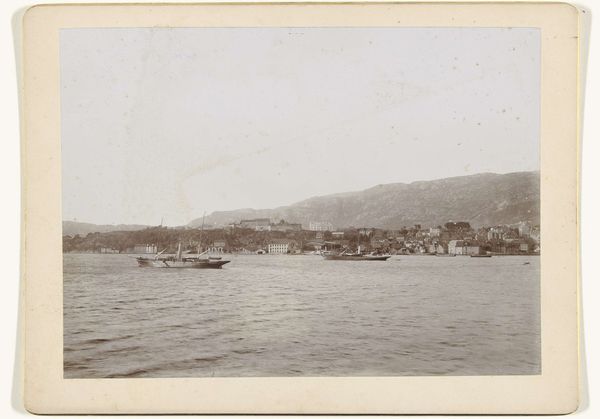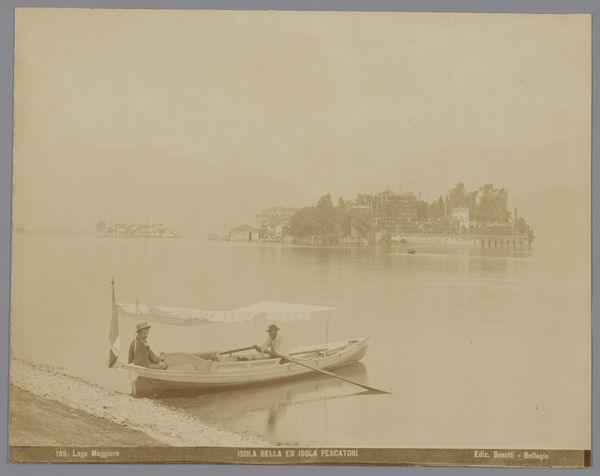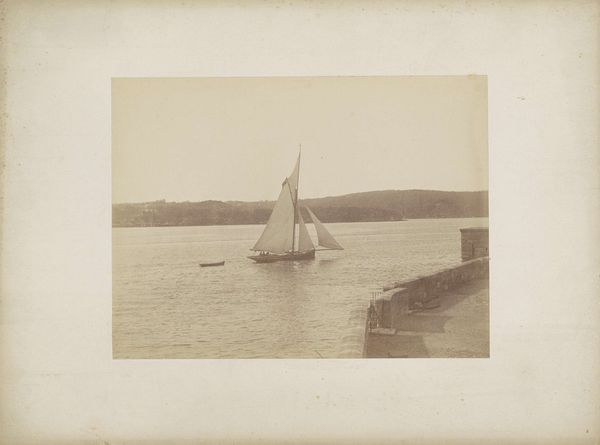
photography
#
excavation photography
#
scenic
#
outdoor environmental image
#
photo restoration
#
landscape
#
outdoor photography
#
photography
#
outdoor scenery
#
scenic photography
#
orientalism
#
outdoor activity
#
scenic spot
#
sea
#
shadow overcast
Dimensions: height 195 mm, width 254 mm
Copyright: Rijks Museum: Open Domain
Curator: It's an arresting photograph. Something about the muted tones just washes over you, doesn't it? Like a forgotten memory surfacing from the depths. Editor: Indeed. This photograph, believed to be captured by M. Iranian sometime between 1880 and 1890, is titled "Ingang van de Zwarte Zee, vermoedelijk gezien vanaf de Bosporus" – that's "Entrance to the Black Sea, presumably seen from the Bosphorus". As a study in composition, observe how Iranian crafts space, placing our viewpoint at an elevated, almost theatrical distance, framing the sea. Curator: "Theatrical" is right. The light almost feels like stage lighting! And those ships... one almost feels like a phantom ship. Does it look slightly off-focus? Was that the intention? Or just an artifact of age? I am curious about that fishing net. Almost as if Iranian wanted to add tension, contrasting natural serenity with human intrusion... or embrace the symbiosis... I feel he felt melancholic! Editor: You read much emotion there! A formal analysis points toward its structural role. The delicate grid of the fishing nets cuts horizontally across the scene's lower portion, thereby acting to enhance the sense of depth as we view it! Consider the tonal values: a spectrum from a brighter horizon fades downwards. This light contrast serves to emphasise recession into space. The very architecture, here, constructs an ordered landscape narrative. Curator: Order? I do sense balance with those three vertical shapes. They guide me as they contrast each other. Editor: The photographic process of the late 19th century obviously dictated certain aesthetic limitations which, paradoxically, defined opportunities for its practitioners. One admires the commitment here to compositional depth despite some apparent challenges inherent in outdoor photography at that period. Curator: Well, whether meticulously planned or happily stumbled upon, this photograph holds a timelessness for me, a quality that speaks across the ages. Editor: A convergence between then and now... An early window opening into our modern sensibilities... Perhaps the aesthetic bridges, spanning across decades, highlight universal facets pertaining to human perception after all?
Comments
No comments
Be the first to comment and join the conversation on the ultimate creative platform.
